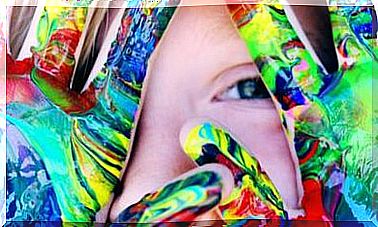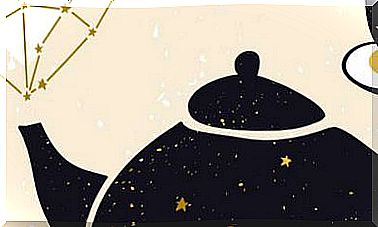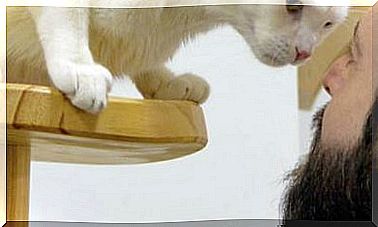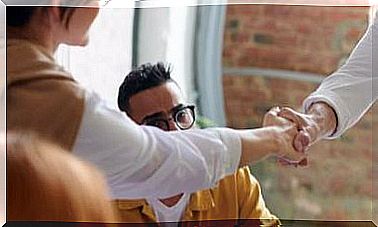“Stories Give Us Pleasure And A Great Capacity To Adapt”
He is one of the great experts in neuroscience in our country. Study the functioning of our brain and how it is modified according to our experiences.

Listening to it is like rediscovering ourselves. His knowledge based on the latest discoveries in neuroscience draw a new dimension of the human being that allows us to understand in depth how our brain has evolved and the contribution of stories and social relationships in this process to ensure life.
Óscar Vilarroya is a doctor and director of the Research Unit in Cognitive Neuroscience (URNC) and of the chair “The Social Brain” of the Faculty of Psychiatry of the Autonomous University of Barcelona. He has published several books such as The dissolution of the mind (Tusquets) and We are those who tell ourselves. How stories build the world we live in (Ariel), which explains the importance of stories in our brain development and their determining role in ensuring our survival as a species.
Interview with Óscar Vilarroya
–Does our identity go through what we tell ourselves about ourselves and about the world?
Yes, but it doesn’t just depend on one story, but on many. Humans are essentially narrative beings and we need to explain what happens around us through stories. We need an explanation for everything from the smallest things to the biggest. This responds to the need we have to find a reason for what is happening around us. It is clearly seen in children already at an early age when they do not stop asking: “Why? And this why? This characteristic is unique and exclusive to human beings. Chimpanzees don’t have this need.
They don’t even ask “why?” nor do they need to explain things like us by means of stories. But this need has been decisive for our evolution since we have built a reality based on stories and these are our way of understanding the world and ourselves.
– Is language what facilitates man this way of explaining and cutting reality to apprehend it based on stories?
– My hypothesis is that the stories did not begin with the language. As a species we have lived on this planet for more than two hundred thousand years and at first we had no language. The language was developing later, little by little and it was before the need to explain the world to us through stories. Our brain is designed to explain things even without speaking. In fact there are events that do not require language to be explained. If I throw this object and it breaks when it falls to the ground, I do not need words to understand what has happened when I throw it. A story of what happened can be created in my brain without the need for words. But effectively, from the appearance of language, the stories begin to become more sophisticated and can also be preserved and transmitted to others.
Language has favored the creation of stories, although it is not the origin of them. The origin lies in the way the human brain works, which always needs a reason.
–And is there a reason to explain this human need?
– Various hypotheses are played to explain this need. One of them is that we are an extremely social species, much more than any other and much more than our cousins the gorillas or chimpanzees. There are historical data on the evolution of human beings that certify that, as the Bible tells us, our species was “expelled from paradise.” Six million years ago, in Africa, a brutal change in the climate was experienced that expelled our ancestors from the lush jungle – paradise – where chimpanzees and gorillas lived alongside our cousins. This jungle dried up and ended up becoming a savannah where it was much more difficult to stay safe from predators. As they were forced to settle on the borders of this “paradise” and to live in a more dangerous area, because their sight was left and they could no longer climb trees, to ensure their survival, they needed to trust much more in their fellows, create alliances and form groups.
Thus, for this to be possible, it was essential to understand each other well, to guess if the other was cheating us, if he was willing to collaborate, etc. That is why we became increasingly socially sophisticated beings. To develop this relational intelligence our brain evolved and thus the learning of the roles of each of the members of the group was facilitated, deciphering the intentions, the meaning of a look … To learn all this, most children need years.
–And how do children learn all this?
–Through symbolic play. They pretend that they are this or that character in the group or that they are in that or that situation. The symbolic game creates stories that have happened and also that have not happened. But through these games the child develops a narrative laboratory that allows him to learn the roles of each one in the society in which he grows up. But not only the story is essential in childhood, but also in adulthood we continue to learn through the stories that we tell ourselves and that they tell us.
“Is there evidence of how important stories are to our survival?”
–As I mentioned in the book, a study was carried out in some tribes of the Philippines, who were gatherers and hunters, to see which members of the same had a better reproduction performance. It was found that those members of the tribe who told the stories that the rest liked the most were those who had the most descendants. The story has an adaptive function and also produces a performance.
We need to be social beings and for this reason we need stories.
Children love to listen to stories and stories, repeat and practice them, play symbolically and we adults get hooked on series, movies and novels. The stories give us pleasure but also a great capacity for adaptation. The stories are full of benefits. It is extremely important to tell stories and stories in childhood because they are the main tool that children have to learn to be adults and to train for those situations that they may experience later.
– And does art also have this survival function?
-Too. Art is a by-product of this tool – the story – that has been essential for us to survive. What does it take to create a good story? Be able to imagine. And imagination requires creativity. Therefore, the more creative we are, the more stories we can create, the more we learn, and the more trained we will be for life. In the beginning, science was art: our ancestors drew a painting on the walls of a cave in an attempt to explain their reality and what surrounded them.
–Science is also a story to a certain extent.
-In part yes. We have already seen on more than one occasion how scientific paradigms are changing, but the more developed science is, the more resources and tools it manages away from the story. Of course, anyway, at the moment when science begins to spread it already becomes a story again.
– Are there many myths in our civilization?
– Human beings like to fill in those gaps in which we cannot find an explanation with a story, that is, with a myth. So there are many. We also need to feel that there is a transcendence, that there are people who have done very important things and who protect us. Religions have this function: with their narrative they fill in the gaps of those “whys” that we cannot answer in any other way.
– Does the fact that we have a social brain explain the success of social networks?
-Clearly. As I said at the beginning, we are ultra-social beings. Chimpanzees groom, scratch each other and deworm, is what we do on social media: verbal grooming. We scratch our backs and say nice things to each other.
– But there are also strong confrontations in the networks.
-Yes. In social networks we find the most positive and the most negative dimension of the human being. We are a bodily species and for two hundred thousand years we have communicated as we saw and touched each other, something that does not happen now. Thus, without this direct contact, the good is exaggerated and the bad too. When we are in front of someone, even if we want to insult him, we hold back.
While in the networks you can say everything to the other because there is a kind of splitting of the personality. When you meet a hater in person, he is usually shy. On the other hand, it behaves like a monster on social media.
– Are there stories that feed the most dangerous emotions such as fear and hatred, especially on social networks?
–The fake news and this type of malicious product that circulates on the networks are like a Trojan horse that sneaks in to awaken emotions such as anger and fear, which make us lower our guard, cancel our critical spirit and easily mobilize us.
Anger and fear are two very good tools to manipulate and create ideology.
Critical thinking is the only thing that can protect us from this. As in addictions, so that this does not work, the first thing is to be willing to believe that we are not right and be open to change your mind. Another thing that can help us not to fall into these manipulations is not to give credence to simplistic accounts that claim that there are quick solutions. You have to be cautious, assess where the information comes from and contrast it.
–And how to protect the little ones from social networks?
– Above all, you have to help them develop a critical spirit, but what the psychologist Jerome Bruner points out seems very important to me. He says that two hundred thousand years ago humans formed very small groups, and in these groups children and adolescents always learned in direct contact with the adults who accompanied them in their growth and maturation process. Even in the transition rituals performed on adolescents, they were accompanied by adults who put them at risk, but always in a controlled and supervised way by the adult.
In the modern world, adolescents are subjected to risky situations alongside young people who, like him, are not aware of the risks to which they are exposed. We should go back to this more direct type of contact with our children growing up alongside strangers because we only see them for a little while at night and on weekends.
– One of his most innovative studies is that the brain of women is modified with motherhood. Could you explain to me what this adaptation consists of?
–We took women who wanted to get pregnant and we did an MRI before pregnancy and another after giving birth. And when we compared them with the resonances of their partners (men in this case) we saw that very considerable changes appeared at the physical level in the brains of these women who had been mothers. There was a large reduction in gray matter in different areas of the brain, which scared us a lot at first. Two years later, by repeating the resonances, the changes were maintained.
Then, when we analyzed these modifications in more detail, we realized that the changes were exactly the same as those that occur in the brain of an adolescent, which has many more neurons and gray matter at the beginning of adolescence than at the end of it but when adolescence ends he is a more intelligent being. These changes are called synaptic pruning or adaptive changes.
Thus, after childbirth, the brain of these women had also experienced these synaptic pruning and we realized, through the resonances, that those areas in which we had perceived the changes and reductions were precisely those that were activated when the mother looked at the face of your son or daughter. There was a structural correspondence with the functional one. Furthermore, the better the quality of the bond between mother and child, the more brain changes had occurred in these areas. In other words, in motherhood there is a physical restructuring of the brain so that it better adapts to the challenges posed by upbringing. The areas related to social cognition are modified, the areas that allow us to better understand the other. It is logical because, when you have a child, you need to understand what he needs to help him and also to know better than ever who can be a threat to you and who an ally.
Once again, things related to social knowledge in the brain are restructured.
– Besides social beings we are also ethical beings?
-Yes. We are a moral species because we are a social species. As social beings that we are, we need to regulate behavior through ethical and moral standards. We have seen the areas of the brain that are activated in the face of injustice and are the same as when we feel disgusted on a physical level. Injustices arouse us disgust and it is an adaptive reaction to protect those you consider yours. It has the social function of protecting the tribe.
Body, mind and happiness
MRIs have revolutionized neuroscience by allowing the observation of the brain in full operation and checking which areas of the brain are activated when we do something, when we speak or feel. To a large extent, thanks to neuroscience, the mind-body duality has been practically disproved.
“I defend that the brain is not an isolated organ, but that our cognitive, mental and emotional capacities are closely linked to the body. And not only to the body, but also to the environment and history of each person. In animals we have verified the importance of context and interaction. The brain does not work independently of what surrounds it, and neither does the body.
“Neuroscience has also shown that unconscious processes make up 99.999% of the brain. And we don’t have any access to these processes because they use code that is unintelligible to us. The only thing that comes to us is the final product as if we were in front of a black box. “
“Each of us has a particularity – be it because of our genetics, our history, etc. – and there is an articulation between this consciousness – or narrator of ourselves – and these unconscious processes.
What has been shown is that those people whose conscience is adequately articulated with what their particularities are are happier. If you have a disposition that leads you to be an introvert, becoming a rock star will make you suffer. Whereas if you are an extrovert, locking yourself in a laboratory will not be good for you.
We must therefore learn to listen to our unconscious, even if we do not understand it, and dialogue with it to discover what our dispositions are, to learn to live with them and make the best possible use of them ”.









